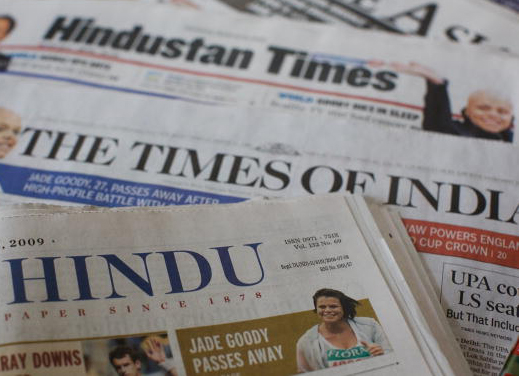
Government could review gold restrictions by end-March: Chidambaram
The government will review its tight curbs on gold imports by the end of March, the finance ministry said. India used to be the world's biggest buyer of bullion until last year when a swollen current account deficit prompted the government to slap a record 10 percent duty on imports and the central bank to tie imports to exports. Any easing of curbs could boost imports and might make smuggling less attractive. Revenue Secretary Sumit Bose said on Monday a review of gold curbs will come by the end of March, which coincides with the end of India's fiscal year and collating of budget figures. India's current account deficit is now expected to be below $50 billion in this fiscal year compared with earlier estimates of about $70 billion. Last year it was a record $87.8 billion.
(Source: Economic Times)
Economic growth in India projected at 5.35% in 2014, says UN report
India's economy is projected to grow at a slower-than-expected rate of 5.3 per cent this year, according to a United Nations report. The UN World Economic Situation and Prospects 2014 (WESP) report said a mild recovery in investment as well as stronger export growth will help in the gradual GDP pick-up. It said the Indian economy, which accounts for over 70 per cent of total output in South Asia, slowed further in 2013. The growth was held back by weak household consumption and sluggish investment, the report added. Full-year growth decelerated to 4.8 per cent in 2013 from 5.1 per cent in the calendar year 2012. It said external conditions continued to be challenging as the Indian economy experienced significant capital outflows, which led to a sharp depreciation of the rupee. The global economy is projected to grow at a pace of 3 per cent in 2014 and 3.3 per cent in 2015, compared to an estimated growth of 2.1 per cent in 2013.
(Source: Financial Express)
Retail policy should be encouraging to all players
India has to have a policy that allows foreign players as well as the local players to grow, allowing local businesses to learn the best practices, said retail market expert Venkatesh Shankar. The Indian retail market, which is currently at around $550 billion, is expected to reach a $1 trillion in the next few years. He said online market in India is evolving very slowly because of low penetration of internet and mobile. The country's advantage is its demographic dividend. Around 50 per cent of Indians are under 25 and 70 per cent of them are under 35. Thus, there is close to 900 million customers potentially digitally very savvy. There are some good opportunities online, he added .Infrastructure for transportation and broadband penetration is very important, as the retailer may not be able to deliver quickly due to the tier II, III customers in an inadequate infrastructure set up, he said.
(Source: Business Standard)
100 innovation hubs in India by 2017: Sam Pitroda
To encourage school children to explore scientific discoveries, 100 innovation hubs would be established throughout the country by 2017. These hubs would be set up in Science Centres at an outlay of Rs 99 crore, Sam Pitroda, Chairman of National Innovation Council told reporters today. Pitroda, who is also adviser to the Prime Minister on Public Information Infrastructure and Innovations, emphasised on schools creating their own innovation labs. The Innovation Club in Delhi is the third such facility in the country after Bangalore and Kolkata. It is equipped with multimedia kits, tech lab for robotics and microprocessor programming.
(Source: Economic Times)
Economic Section
Royal Thai Embassy















